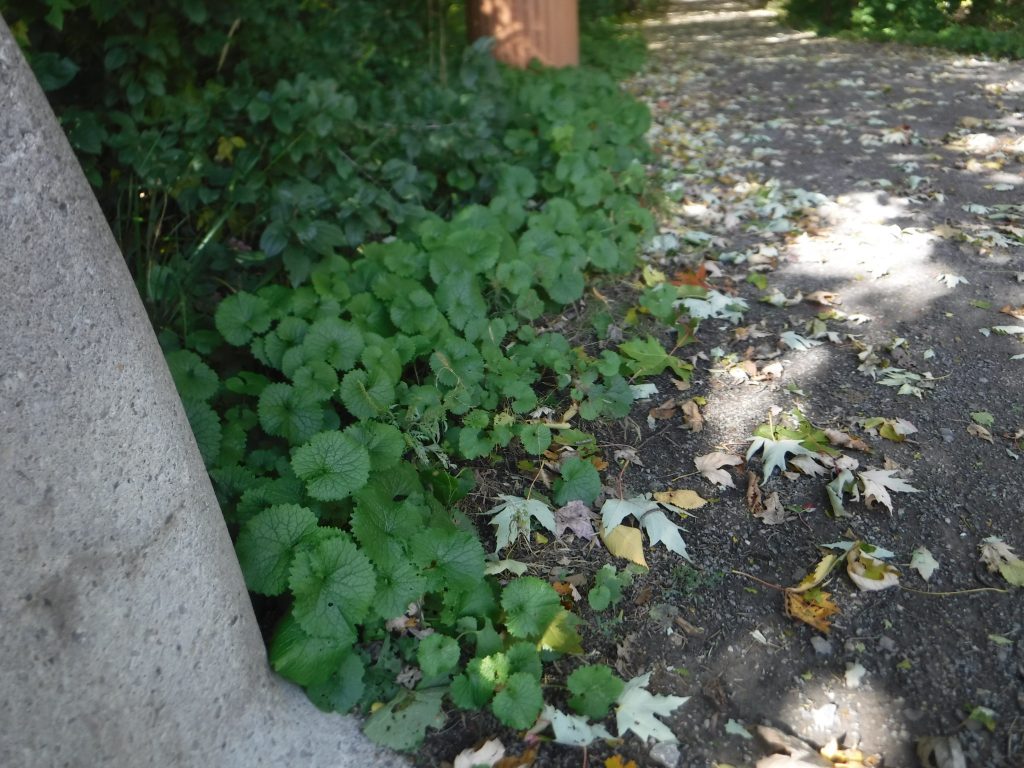
Garlic mustard is an introduced Brassicaceae (mustard family) native to Europe. It was brought to North America at the beginning of the 19th century for culinary reasons, as it is rich in vitamin A and C. This plant also strongly smells like garlic when wrinkled. Today, it is a problematic garden escape. In Ontario, it has become the main herbaceous invader in woodlands. It is spreading south down to South Carolina and was also reported in the Maritimes and in British Columbia.
.jpg)
Its success relies on many attributes. First, its high reproduction rate is due to the generation of massive amounts of seeds which are easily dispersed by humans and animals. Second, the roots produce high levels of glucosinolates which affect the mycorrhizae in symbiosis with other plant rooting systems, thus weakening surrounding plants. And third, this plant is rarely grazed by herbivores due to the pungent taste of its leaves.
.jpg)
This plant is biannual. It alternates between the rosette stage, where its leaves are close to the ground and rounded (picture on the left), and the flowering stem where the leaves are triangular (third on the right picture).
You may find garlic mustard in dry areas, in the open or shade. Hiking trails accelerate the colonization of garlic mustard in forests. It is fairly common to come across an isolated patch, and luckily, they can be easily pulled out (make sure to pull out the rooting system as well). Larger populations may necessitate more intensive interventions because seeds can remain in the soil for 10 years and will therefore reappear for many springs to come.
In Laval, garlic mustard is quite common. Shady mounts of backfill, lawns and trails are its prime habitat.
Sources
Ontario's invading species awareness program
Sentinelle – Quebec's government (in French)



